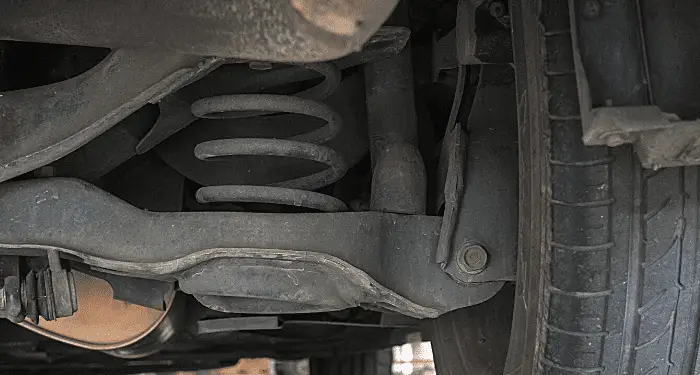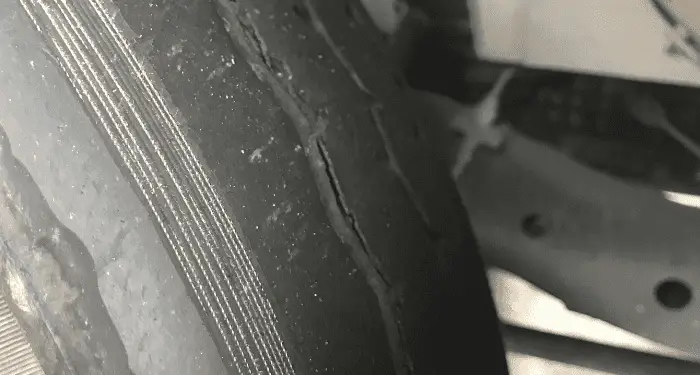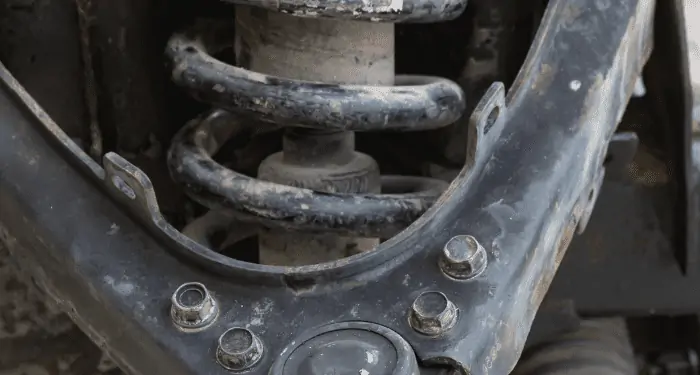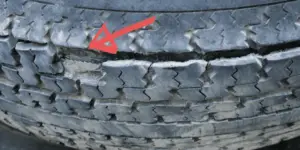What Is a Coil Spring?
Coil springs are an essential piece of a car’s suspension system. They support the weight of your car and keep it raised off the ground. These springs absorb shock from bumps on the road to ensure you have a smooth ride. They don’t last the lifetime of a car and do break and go bad.
The eight main signs of a bad coil spring are:
- Uneven tire wear.
- Jounce bumpers that are worn, broken, or missing.
- Decreased ride or handling.
- Cracking or rust on the springs
- Rattling noise
- Traction control light on
- Variable ramp angles or kinks in springs.
- Sagging, leaning, or swaying or tilting, especially when the car is loaded.
The condition of the roads the car has been driven on dictates how long before the spring rate is altered enough to mean it needs replacing.

The most common signs that your car’s coil springs are worn and need replacing are the vehicle sags on the corner where the coil spring has gone bad – the coil spring sits below the top hat and above the lower control arm – and uneven tire wear on the wheel of the defective spring.
Here are the eight signs starting with the easiest to spot and down to the more rare signs.
8 Symptoms of a Bad Coil Spring
1. Vehicle Sagging on One Corner
A sagging vehicle is the most common sign of a worn-out or broken coil spring since you can spot it quickly.
As a crucial part of the suspension system, the coil spring is supposed to maintain balance on all four sides of the car.
If more than one coil spring is broken it can affect the overall car ride height.
Therefore sagging corners are a clear sign that something is wrong. It makes your car more unstable when you drive because weight is not distributed equally on all wheels.
Is your vehicle lower on one side? Why Is My Car Lower On One Side? When It’s Okay and When It’s Not
The jounce bumper or bump stop is a closed shock designed to absorb all the shocks and impacts when you drive your car over potholes or hit the curb. These often fail at the same time as the coil spring. They stop the car from bouncing to the chassis when driving off-road or in bad road conditions.
Have a certified mechanic check out your car before the problem extends to tire wear, affected steering, or even braking, as these additional problems will add to the total repair costs if left.
2. Uneven Tire Wear
The alignment geometry shifts when your car has a bad coil spring, and more stress is placed on the wheel with the defective spring.
The wheels and tires are no longer evenly balanced on the road, and they do not receive an equal amount of wear when they rotate. You may even feel vibrations and tire shakes coming up to your steering wheel when driving at speed.

This situation may lead to; handling issues, worn-out tires, or even a blow-out.
If you see more wear on one tire than the other on the same axle and were replaced simultaneously, this is a good sign that the coil spring has caused the tire to wear quickly.
3. Increased Bounciness When On Uneven Roads
The coil spring is designed to absorb shock from bumps and potholes and prevent your car from bouncing whenever you encounter them. A weak coil spring compresses easily and cannot keep your car from bouncing and shaking.

The situation worsens the more you drive, especially if you regularly drive on gravel roads or off-road.
If left unchecked, this feeling will be felt on all road services. Some people feel car sick for the first time when one coil spring is weaker than the others.
4. Unusual Rattling Noise
One great benefit of the coil springs is that they reduce the noise you would otherwise hear in your car if you didn’t have them.
When coil springs break or deteriorate, they make irritating, rattling, or clunky noises. You may hear this noise more frequently when you accelerate or off-road to rougher terrain, as it’ll be louder under those conditions.

This noise can be difficult to pin down to a corner when you’re in the cabin and driving, but the other two signs above should be present to help you identify from what corner the noise is coming from.
5. Bottoming Out
As established above, one of the purposes of a coil spring is to raise your vehicle from the ground. When a coil spring wears out or collapses, it becomes weak and can no longer support the weight of your car.
Therefore, your car’s suspension will have much more space to shift up and down. When the coil spring is fully compressed, the car will bottom out once you hit a bump on the road.

You must be more careful driving under this condition to avoid destroying your undercarriage, transmission, driveshaft, or other car parts.
These are expensive repairs – far more than the cost of replacing the spring – so you’ll save money by getting a replacement spring fitted as soon as you notice it.
6. Traction Control Warning Light Illuminated
The Traction Control System in most modern vehicles comes equipped with a warning light on the dashboard. Sensors built into the suspension system monitor the stability of the car.

The warning lights come on every time the sensors detect any abnormal movements and alert you that something is going on with your suspension, most probably your coil springs.
7. Unusual Vehicle Swaying
This problem is more common in large vehicles and trucks. When you make a sharp turn on the road, the wheels lose traction. They lack the suspension system’s stabilizing force to keep the traction uniform across all the wheels.

It can become a dangerous situation. I have seen a truck sway wildly when joining an intersection before and knew that a coil spring had gone on one of its rear wheels. There was no wind or other adverse weather conditions that could have caused it.
You should be cautious when replacing a coil spring because it holds compressed energy. Ensure that you slowly remove and decompress the old spring. Or better yet, get a mechanic to do it.
8. Kinks In Springs
A visual inspection of your coil springs will identify any kinks in them. If you have just bought the car and are unsure how the previous owner drove the car, it’s always worth checking. Off-roading or driving on uneven or gravel roads can put standard springs under a lot of stress.
Kinks may be subtle but are more likely on the front coil springs, as this is where most of the car weight is. Make sure that all of the springs have the same amount of coils and haven’t been modified by the previous owner.
Other visitors often read this next: Do I Have Shocks or Struts? Look Behind The Tires
In Summary
The most common signs of a bad coil spring are that one corner of the car sits lower than the other three and that there is more uneven wear on that tire than the others. Other symptoms are a rattling noise and the traction control light illuminated.
It’s essential to replace it as soon as possible for two reasons. First, it is dangerous to drive with a bad spring, and secondly, leaving it will cause other suspension parts to fail as they are being put under more stress to compensate than they were designed for. Tires will wear more, too, if left unchecked.
The cost of replacing a coil spring range between $40 and $150 for the part and an additional $100 to $200 in labor. Expect to pay between $140 and $350 in total, depending on the make and model of your vehicle.






![Do I Have Shocks or Struts? [ANSWERED] struts](https://carzaza.com/wp-content/uploads/2024/02/struts-300x161.png)






